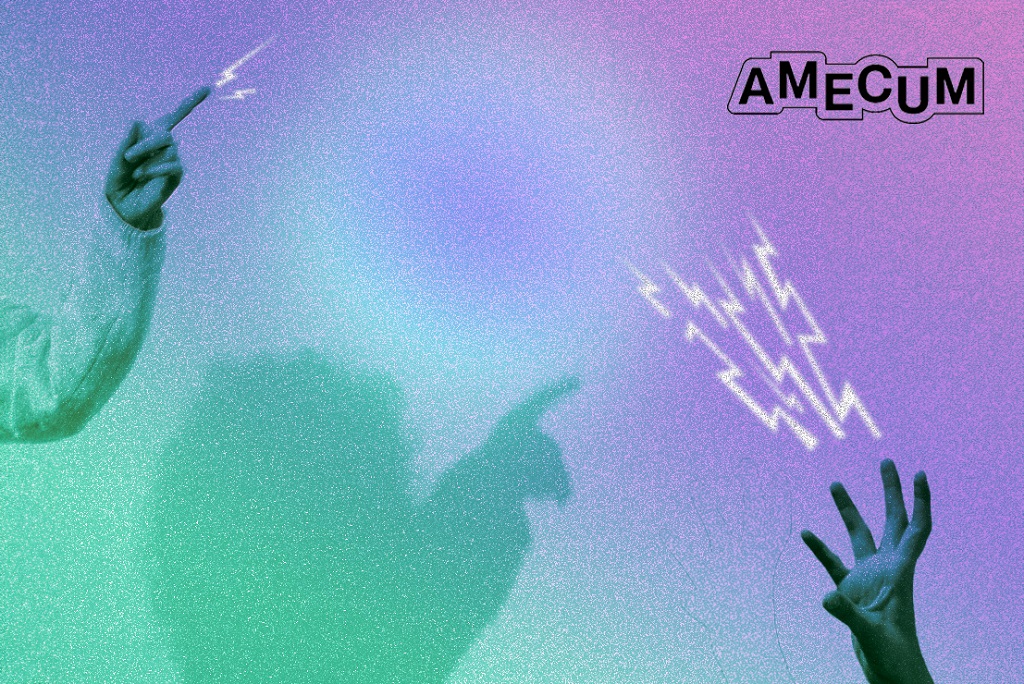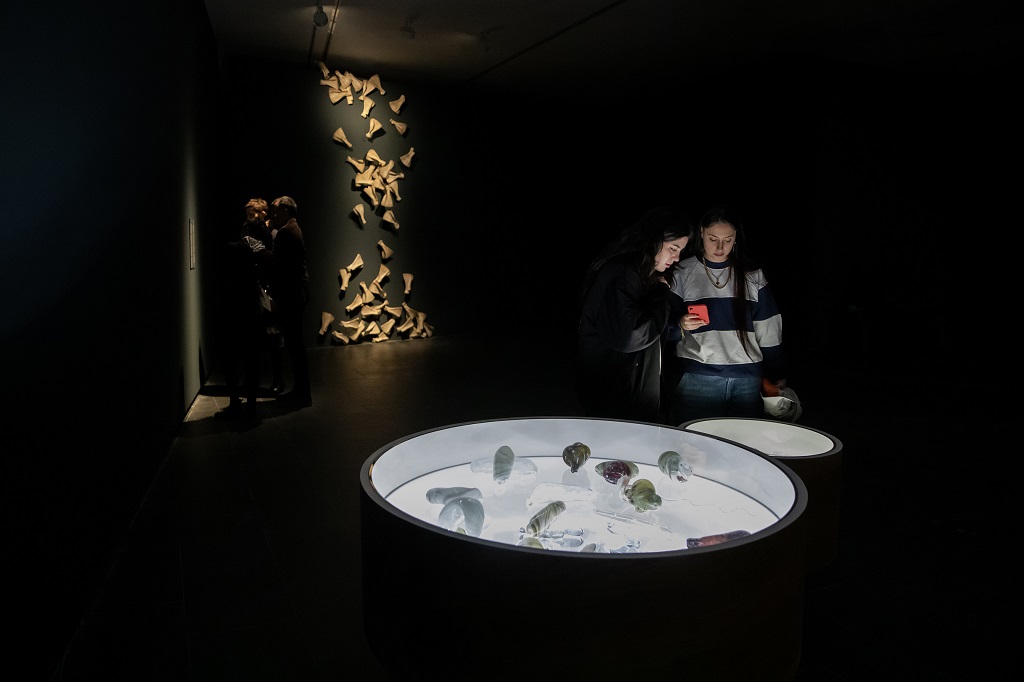Raising our own flag on the museum’s façade for one minute. Inventing colour palettes that we’ll use to build the landscape of Móstoles precisely at thirty minutes past noon. Bringing our bodies together close, really, really close, until we become a huge rock. Doing meditation exercises on the building’s rooftop or imagining the sunset-tinged evening sky.
These are just a few of the experiences that the students who visited the museum had. During the school year, we offer activities designed for groups of secondary and baccalaureate students that revolve around the exhibitions and seek to generate meaningful experiences. Our project aims to forge a direct tie between contemporary artistic practices and students with the goal of revitalising and bringing new life to the museum’s spaces. To do so, we approach the exhibitions as spaces of creation and collective inquiry.
This time, we’ll work with the exhibitions of Santiago Sierra and Sol Calero. Exploring these two shows will enable us to connect with topics like identity, migration, power and exclusion. This experience seeks to not only expand students’ understanding of contemporary social and cultural issues but also generate spaces for critical thinking. It is an encounter designed with the desire to share knowledge, practices and experiences and to debate the content of the exhibitions with the students.
With this approach in mind, we have invited the artist Marta van Tartwijk to work with us to come up with and design strategies to activate the exhibition spaces.
Marta van Tartwijk (Barcelona, 1990) has a degree in Fine Arts from the Complutense University of Madrid and furthered her training at the École Superieur d’Art de Bretagne (France), the University of Barcelona and A*Desk. She has exhibited and developed her work in different institutions like Fabra i Coats, INJUVE, Sala de Arte Joven, TEA Tenerife, La Capella, Bilbaoarte, DosMares and Matadero. In her practice, she explores how images can access personal experience and serve as a hinge that articulates times, contexts and subjective experiences by experimenting with body and language.
AFORO: 35 PERSONAS
We will work on the exhibitions of Santiago Sierra and Sol Calero. Exploring these two exhibitions with the students will allow us to connect themes such as identity, migration and power.

Santiago Sierra. Woman in a bonnet seated facing the wall. Spanish Pavilion at the 50th Venice Biennale. May 2003. Courtesy of Estudio Santiago Sierra. © Santiago Sierra. VEGAP, Madrid, 2024.








